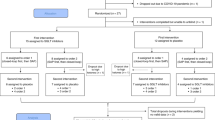Abstract
The use of open-loop devices in unstable diabetes has led to controversial results. This is likely to be due to the fact that heterogeneous clinical conditions have been classified as unstable or brittle diabetes. In a cross-over protocol we have studied seven unstable diabetics characterized by elevated glycosylated hemoglobin (HbAUI), increased number of hospital admissions, frequent urinary finding of ketone bodies, despite a multi-injection regimen of insulin therapy. All the patients showed a C-peptide secretion in the low range. The diabetic subjects were randomly allocated, either to continuous subcutaneous treatment, or to traditional intensive insulin therapy (three doses of regular plus lente at bedtime), and crossed over to the second treatment after one month. Continuous subcutaneous treatment reduced fasting blood sugar from 283 to 108 mg/dl, p < 0.02, glycosuria from 15 to 7.5 g/24 h, p < 0.05 and HbA| from 10.8 to 8.8%, (p < 0.05). The split insulin therapy reduced glycosuria, but did not affect significantly blood glucose and HbAI. After continuous subcutaneous treatment, patients showed a decrease of insulin requirement (p < 0.05), a lower level of mean daily plasma free insulin (p < 0.05), and a reduced degree of free insulin excursions over the mean daily value (p < 0.01). We conclude that in unstable diabetes continuous subcutaneous insulin therapy is effective, albeit not capable of inducing normalization of metabolic control; the amelioration of metabolic condition is accompanied by a decrease of daily insulin need, of the mean daily plasma free insulin levels and of the amplitude of circulating insulin oscillations. Yet being unproved a clear cut superiority of this therapeutic approach over the traditional intensive split insulin regimen, this alternative should be also considered.
Similar content being viewed by others
References
Rizza R.A., Gerich J.E., Haymond M.W., Westland R.E., Hall L.D., Clemens A.H., Service F.G. Control of blood glucose in insulin dependent diabetes: comparison of an artificial endocrine pancreas, continuous subcutaneous insulin infusion and intensified conventional insulin therapy. N.Engl. J. Med. 303:1313, 1980.
Saibene V., Melandri M., Brambilla L., Spotti D., Pozza G. Comparison between multi-injection and continuous subcutaneous insulin therapy in insulin-dependent diabetic patients. Acta Diabetol. Lat. 18:45, 1981.
Schiffrin A., Belmonte M. Combined continuous subcutaneous insulin infusion and multiple subcutaneous injections in type I diabetic patients. Diabetes Care 4:595, 1981.
Schiffrin A., Belmonte M. Comparison between continuous subcutaneous insulin infusion and multiple injections of insulin. Diabetes 31:255, 1982.
Reeves M.L., Seigier D.E., Ryan E.A., Skyler J.S. Glycemic control in insulin dependent diabetes mellitus. Comparison of outpatient intensified conventional therapy with continuous subcutaneous insulin infusion. Am. J. Med. 72:673, 1982.
Mecklenburg R.S., Benson J.W. Jr., Becker N.M., Brazel P.L., Fredlund P.N., Metz R.J., Nielsen R.L., Sannar C.A., Steenrod W.J. Jr. Clinical use of the insulin infusion pump in 100 patients with type I diabetes. N.Engl. J. Med. 307:513, 1982.
Tamborlane W.V., Sherwin S.R., Genel M., Felig P. Reduction to normal of plasma glucose in juvenile diabetes by subcutaneous administration of insulin with a portable infusion pump. N.Engl. J. Med. 300:573, 1979.
Kitabchi A.E., Fisher N.J., Burghen G.A., Gaulord M.S., Blank M.N. Evaluation of portable insulin infusion pump for outpatient management of brittle diabetes. Diabetes Care 2:421, 1979.
Pickup J.C., Home P.D., Bilous R.W., Keen H., Alberti K.G.M.M. Management of severely brittle diabetes by continuous subcutaneous and intramuscular insulin infusions: evidence for a defect in subcutaneous, insulin absorption. Br. Med. J. 282:347, 1981.
Nathan D.M. Successful treatment of extremely brittle, insulin dependent diabetes with a novel subcutaneous insulin pump regimen. Diabetes Care 5:105, 1982.
Bayliss J. Brittle diabetes: long term control with a portable, continuous, intravenous insulin infusion system. Br. Med. J. 283:1207, 1981.
Barbosa J., Menth L., Eaton J., Sutherland D., Freier E.F., Najaran J. Long-term, ambulatory, subcutaneous insulin infusion versus multiple daily injections in brittle diabetic patients. Diabetes Care 4:269, 1981.
Hill G.B., Kessler G., Chauncey N.Y. An automated determination of glucose utilizing a glucose oxidase-peroxidase system. J. Lab. Clin. Med. 57:970, 1961.
Kynoch P.A.M., Lehmann H. Rapid estimation (2 1/2 hours) of glycosylated haemoglobin for routine purposes. Lancet 2:16, 1977.
Nakagawa S., Nakajama H., Sasaki T., Joshino K., Jumgjin S., Shinosaki K., Haoki S., Hoshimo K. A simple method for the determination of serum free insulin levels in insulin treated patients. Diabetes 22:590, 1973.
Starr D.S., Horwitz D.L., Brijbenstein A.H., Mako M.E. Insulin, pro-insulin and peptide C. In: Jaff B.M., Behnnan H.R. (Eds.), Methods of hormone radioimmunoassay. Academic Press, New York, 1979, p. 634.
Schlichtkrull J., Muncil O., Jersild M. The M-value, an index of blood-sugar control in diabetics. Acta Med. Scand. 177:95, 1965.
Service F.J., Molnar G.D., Rosevear J.W., Ackerman E., Gatewood L.C., Taylor W.F. Mean amplitude of glycemic excursions, a measure of diabetic instability. Diabetes 19:644, 1970.
Author information
Authors and Affiliations
Additional information
Supported by a Grant from CNRI, progetto finalizzato Medicina Preventiva e Riabilitativa sottoprogetto 4.
Rights and permissions
About this article
Cite this article
Micossi, P., Raggi, U., Dosio, F. et al. Open-loop device Microjet MC 2 improves unstable diabetes, lowers the daily insulin requirement and reduces the excursions of plasma free insulin levels: comparison with a traditional intensive treatment. J Endocrinol Invest 6, 189–194 (1983). https://doi.org/10.1007/BF03350606
Received:
Accepted:
Published:
Issue Date:
DOI: https://doi.org/10.1007/BF03350606




